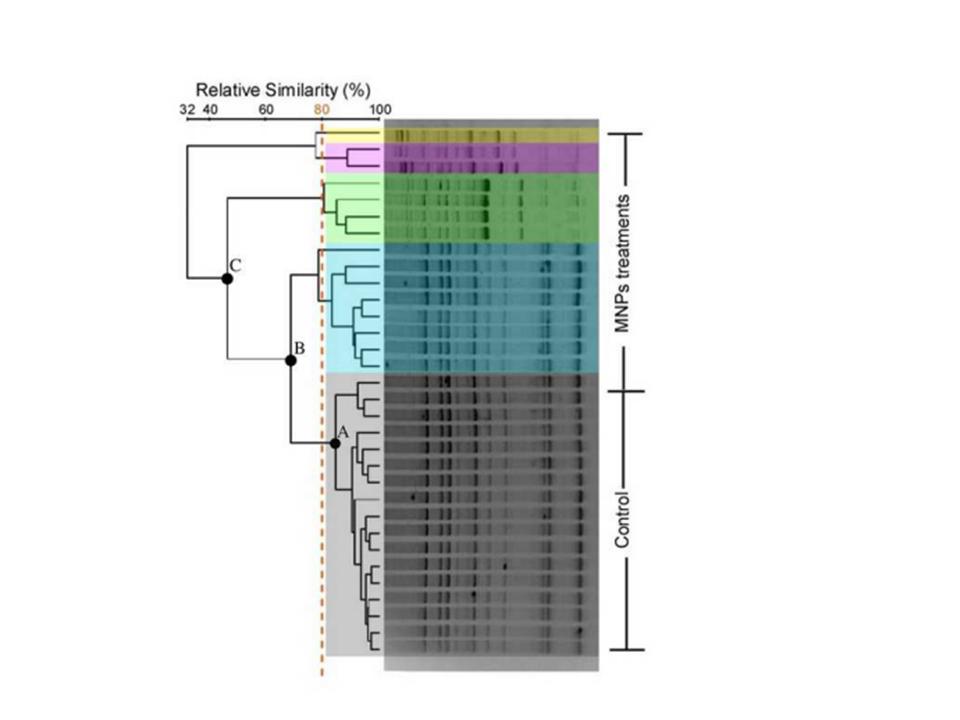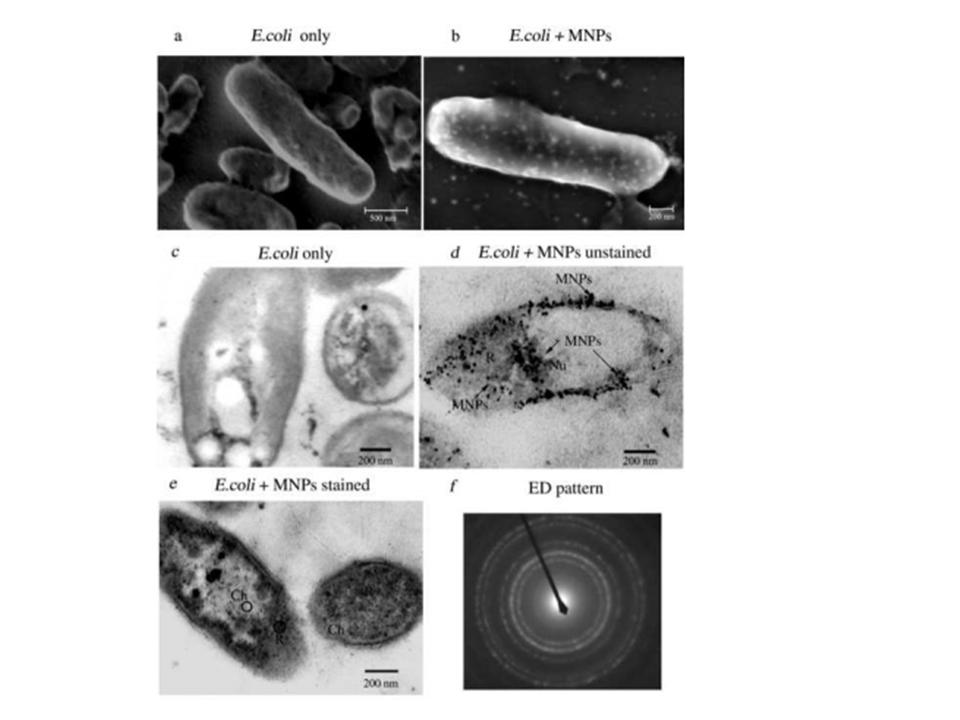随着氧化铁纳米材料在生物医学和环境越来越多的应用,它们对环境和人类健康的潜在的危险也越来越引起人们的广泛注意,目前纳米材料安全性的研究大多集中在人体细胞和动物实验方面。微生物在自然界和人体内广泛存在,而且人体健康密切相关,最新的研究进展表明,结构异常的肠道菌群很可能是肥胖、高血压、糖尿病、冠心病和中风等因饮食结构不当造成的代谢性疾病的直接诱因。因此纳米材料对微生物的影响是其安全性评价的一个重要方面。
本文通过γ-Fe2O3纳米颗粒与大肠杆菌共孵育,首次利用rep-PCR技术评价了纳米颗粒对细菌基因型的影响,一般来说,85%相似度以上的微生物可以认为是单菌株。结果表明,大肠杆菌(ATCC 25922)的基因型发生了明显的改变:与对照组相比(无γ-Fe2O3纳米颗粒共孵育),只有6%的大肠杆菌保持85%以上的相似度,而50%的菌株只有70%的相似度,甚至有18.7%的菌株只有47%的相似度。因此可以认为经过与γ-Fe2O3纳米颗粒共孵育,大肠杆菌基因型发生的变异,这就可能导致表现型发生改变,对人体健康可能产生影响。这种基因型的变化可能主要来自两个方面:一方面是纳米材料可以进入细菌,从而与细菌内的DNA或染色体等遗传相关的生物分子结合,导致其构象发生变化;另外一个原因是γ-Fe2O3纳米颗粒可以释放铁离子,铁离子与细菌内遗传相关的生物分子结合,可以改变其分子结构。此外我们还发现,大肠杆菌的生长并没有受到影响。
本文发表在Environmental pollution Shiying He, Youzhi Feng, Ning Gu, Yu Zhang and Xiangui Lin http://dx.doi.org/10.1016/j.envpol.2011.08.024

Figure 2. Agarose gel electrophoresis of rep-PCR products. Dendrogram shows similarities of E. coli strains from control and MNPs treatments. Relationships between DNA fingerprints were determined by an unweighted pair group using mathematical averages (UPGMA).

Figure 3. Schematic illustration of the possible mechanisms of MNPs interacting with bacteria.

Figure 5. Location of γ-Fe2O3 MNPs in E.coli. a, b: SEM of bacteria cultivated in LB medium without and with MNPs; c, d: TEM of superthin slices of E. coli cultivated in LB medium without and with MNPs. e: TEM of stained superthin slices of E.coli indicates that MNPs bind to ribosomes and chromosomes. f: ED analysis of the area enclosed with a black circle. In figure 3d, e, Nu=nuclear material, R=ribosome, Ch= chromosome.

Figure 7. Optical densities at 600 nm (OD600 nm) of bacterial suspension treated with and without MNPs. Data are means of three determinations and the error bars indicate standard deviation. Values are representative of three independent experiments. *Significant difference to control (P<0 .05).